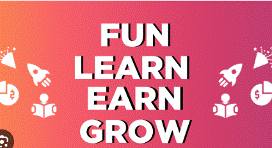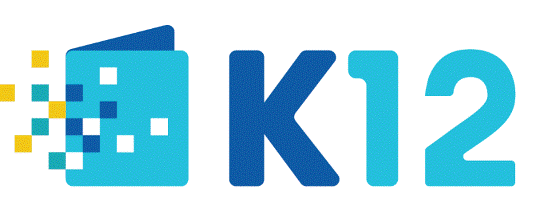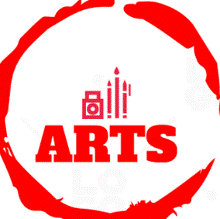






|
|
|
|
|
CONTACT 732-281-7122 732-423-8052 |
|
K12-ARTS-KINDER GARDEN |
|
This course introduces students to the world of art. Students learn about paintings and sculptures. They see art that looks realistic and art that looks imaginary and discover how artists use lines, shapes, colors, patterns, textures, and forms in artworks. Students discuss portrait, landscape, and still life artworks. They draw, paint, and sculpt their own artworks that are inspired by the artworks they study.
This course requires the following household materials, though substitutions or digital alternatives may be available in some cases:
cardstock* clay, oil-based modeling or self-hardening* crayons, colored pencils, oil pastels, and/or markers glue, nontoxic lunch bag, paper* mirror paper, construction or white paint, poster or tempera and/or watercolor paintbrush scissors, round-end safety straws, drinking* tape yarn or string Substitutions are suggested in Lesson 1 of the course.
Unit 1: How Artists Design Artworks Unit 2: People in Art Unit 3: Paintings and Sculptures Unit 4: Still Life and Landscape
LANGUAGE DEVELOPMENT
Listening Skills Speaking Skills Reading Skills Writing Skills
COGNITIVE DEVELOPMENT Basic Concepts Number Concepts Environment Concepts Thinking Skills
CREATIVE AND EXPRESSIVE ARTS Art and Craft Musical song and dance
PHYSICAL DEVELOPMENT Indoor and Outdoor Play Health and Hygiene Nutrition
SOCIAL-EMOTIONAL DEVELOPMENT
The English Language Arts K program comprises two courses, ELA K and Phonics K. The program provides kindergarten students with a complete early literacy learning experience. Students work through structured lessons that emphasize reading readiness, phonics, language skills, literature, writing skills, and handwriting through a combination of teacher-led instruction (either live or via embedded video within the course) and independent practice, both online and offline. The program provides a strong foundation in comprehension and vocabulary to instill a lifelong interest in reading and learning.
Phonics prepares students to become independent readers through teacher-led, systematic, multisensory instruction in a developmentally appropriate manner. Students review letter names, practice phonological awareness, and learn decoding skills and sight words. Letter tiles, a variety of interactive games and activities, and decodable readers (brief stories that consist entirely of words students can read independently) support multimodal learning.
Read-aloud instruction through a wide variety of texts kindles the imagination and builds knowledge while developing listening skills, comprehension, and vocabulary. Students acquire the critical skills and knowledge required for reading and literacy. Text selections include engaging classic literature, exciting contemporary titles, and informative nonfiction topics in a variety of formats including trade books, magazines, and e-books.
Poems and nursery rhymes help students further expand vocabulary and comprehension while developing a love of language. Drawing, and later writing, in students’ My Writing Journal K lays the foundations of the writing process as students brainstorm, discuss, illustrate, and share ideas with others.
Targeted handwriting activities provide gentle instruction to help students print letters correctly.
This course requires the following household materials:
crayons dictation notebook glue index cards scissors, round-end safety sight words box
SEMESTER 1 - Language Arts Unit 1: Teamwork Unit 2: Get Moving Unit 3: Family Time Unit 4: Fun with Fairy Tales Unit 5: Midsemester A Reflect, Review, and Read Unit 6: We Belong Unit 7: Small Creatures Unit 8: What's Your Name? Unit 9: Important Tales Unit 10: Midyear Reflect, Review, and Read Unit 11: Amazing Animals Unit 12: Friendship Unit 13: Grow! Unit 14: Our Earth Is Awesome Unit 15: Midsemester B Reflect, Review, and Read Unit 16: Bodies Can Do Cool Things Unit 17: Three! Unit 18: Hot and Cold Unit 19: End-of-Year Reflect, Review, and Read
SEMESTER 2 - Phonics Unit 1: Sounds /m/, /t/, /n/, /p/, /ē/, /h/, /d/, and /ŏ/ Unit 2: Sounds /b/, /f/, /ā/, /g/, /ō/, and /j/ Unit 3: Sounds /s/, /ă/, /w/, /z/, /ī/, and /l/ Unit 4: Sounds /th/, /th/, /ĕ/, /k/, /v/, and /r/ Unit 5: Sounds /ĭ/, /ŭ/, /ch/, and /y/ Unit 6: Sounds /sh/, /aw/, & /kw/ and Syllables Unit 7: Sounds /oi/, /ū/, and /ks/ Unit 8: Sounds Long Double o and /ow/ Unit 9: Sounds for Letters a, m, s, t, b, f, c, h, and j Unit 10: Word Families –at and –am Unit 11: Sounds for Letters l, n, p, & r and Vowels Unit 12: Word Families –an and –ap Unit 13: Sounds for Letters o, d, g, k, and v Unit 14: Word Families –op and –ot Unit 15: Sounds for Letters i, qu, and z Unit 16: Word Families –in, –it, and –ip Unit 17: Sounds for Letters u, w, and x Unit 18: Word Families –ug and –un Unit 19: Sounds for Letters e and y Unit 20: Getting Stronger: Letters, Sounds, and Word Families Unit 21: Digraphs sh and th Unit 22: Getting Stronger: Word Families and Digraphs Unit 23: Digraphs wh and ch Unit 24: Getting Stronger: Digraphs Unit 25: Word Families with –tch and –ck Unit 26: Getting Stronger: Review Letters and Sounds Unit 27: Word Families with Long and Short Vowels a and e Unit 28: Getting Stronger: Long and Short Vowel Word Families Unit 29: Word Families with Long and Short Vowels i and o Unit 30: Getting Stronger: More Long and Short Vowel Word Families Unit 31: Endings –s and –es Unit 32: Getting Stronger: Vowels Unit 33: Endings –ff, –ll, –ss, and –zz Unit 34: Getting Stronger: Vowels, Plurals, and Word Families Unit 35: Compound Words Unit 36: Letters & Sounds, Words, and Sentences
|
|
|
